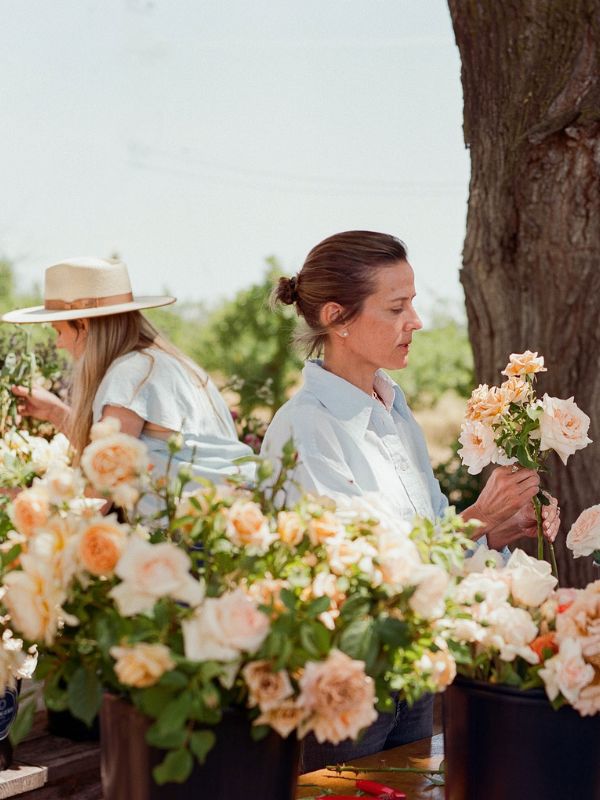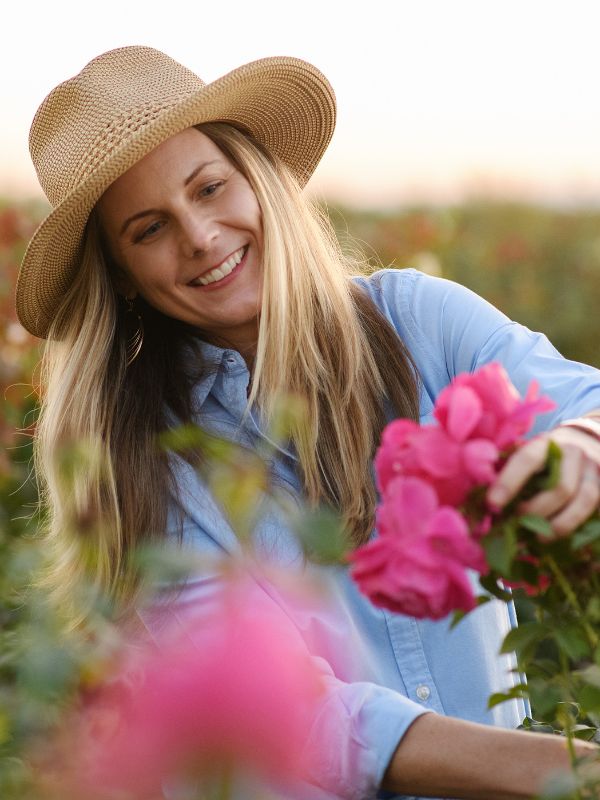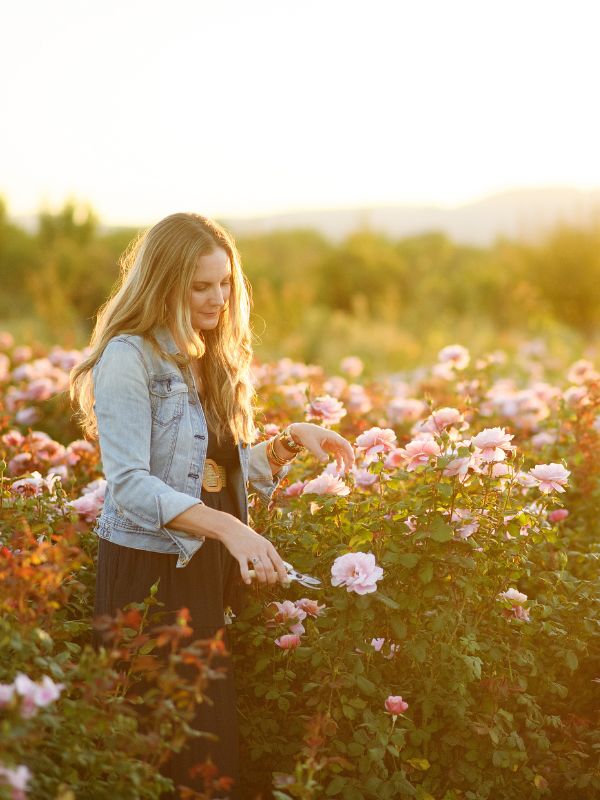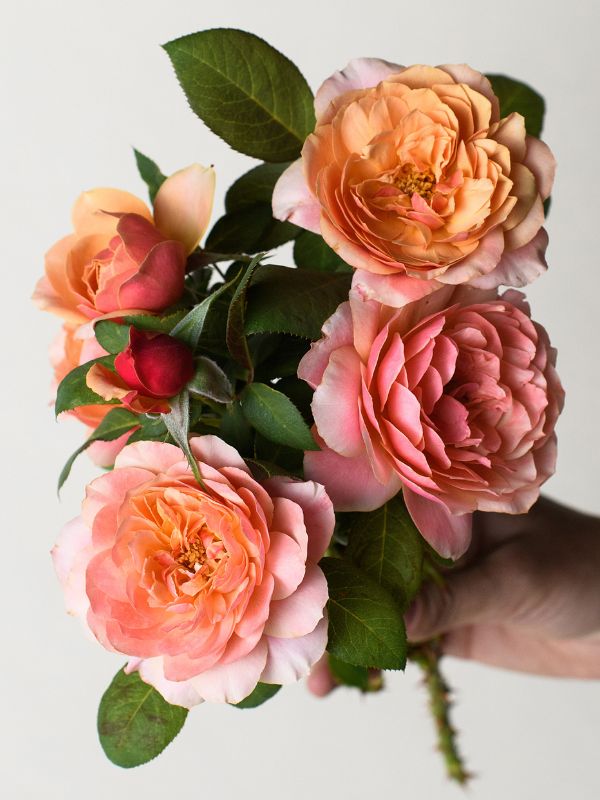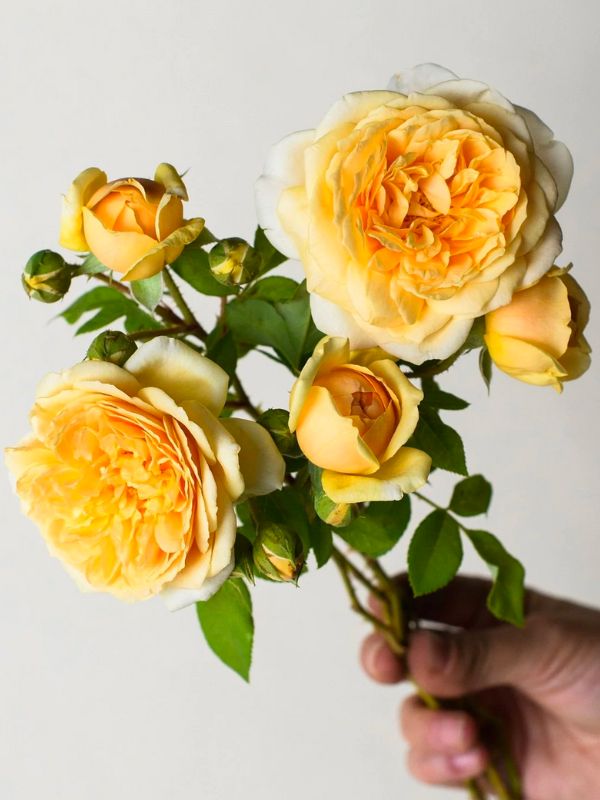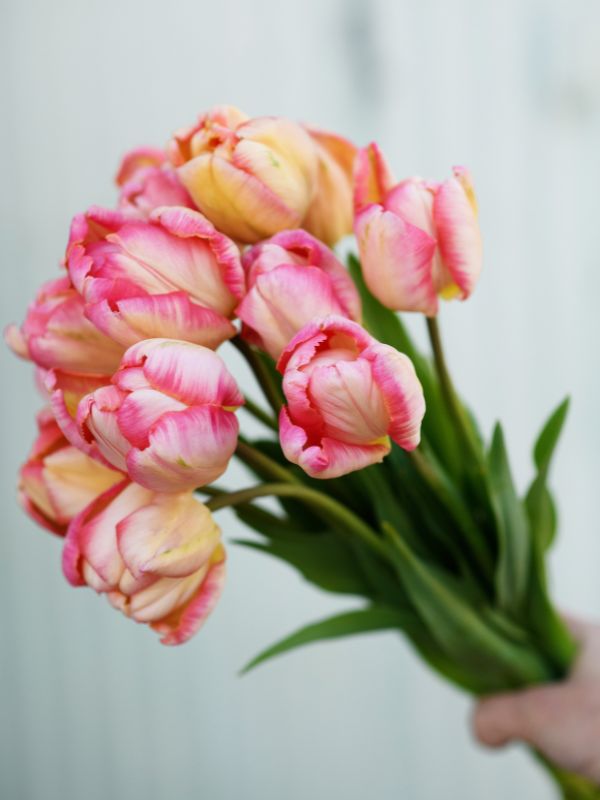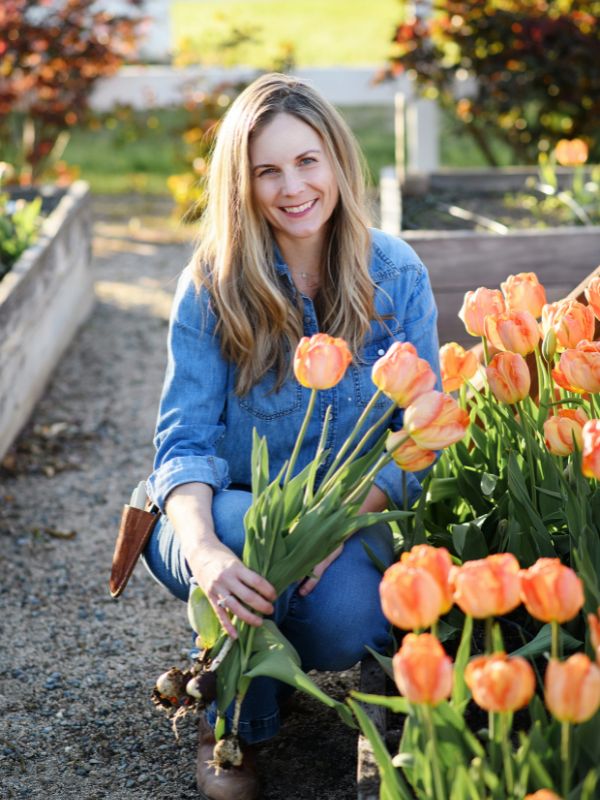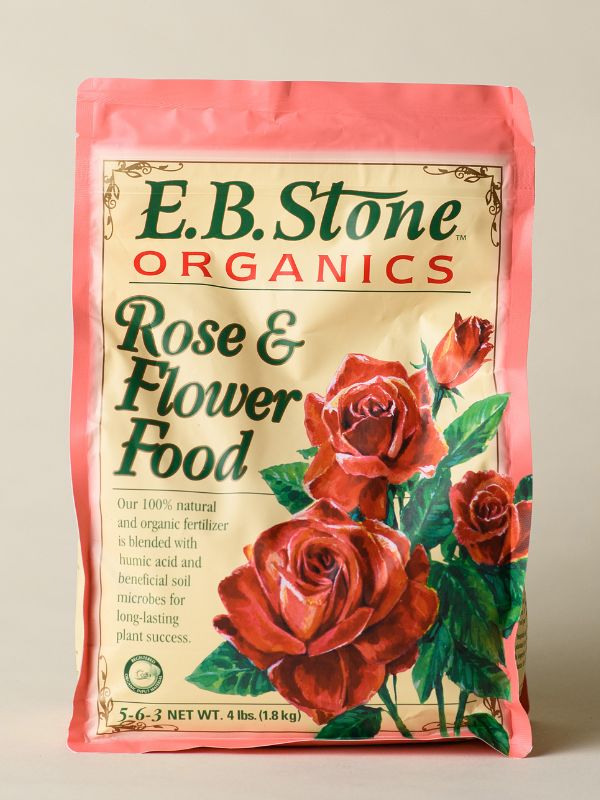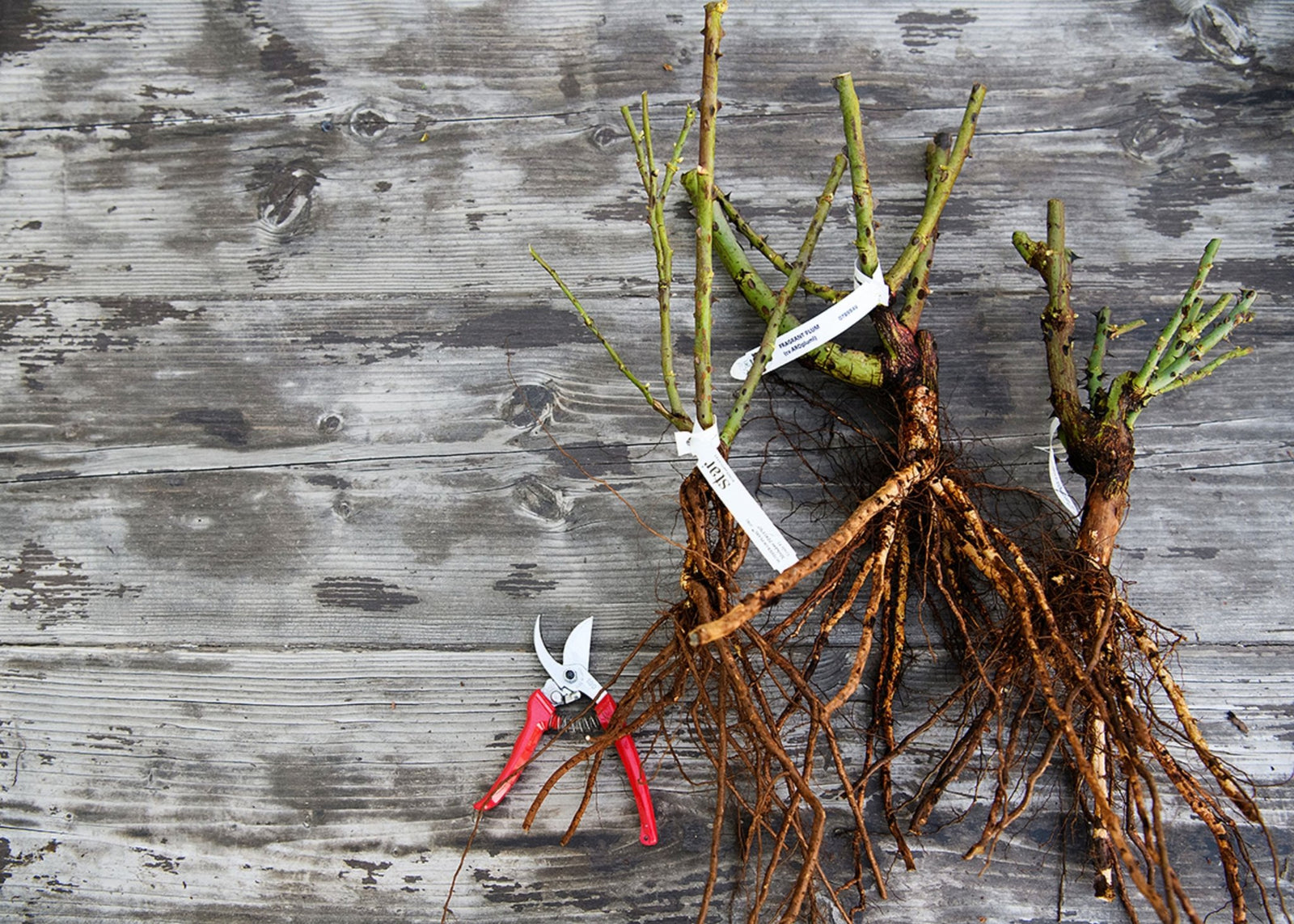As cut garden rose-growers, we all strive for large, prolific blooms and long, strong stems. With so many fertilizer products on the market, you might be wondering which ones will help your roses perform their best. Read on to learn our recommendations for choosing the fertilizing routine and products that are right for your garden!
Determine your rose-feeding program over the course of the year. Granular fertilizer is quick and easy to apply.
IS IT NECESSARY TO FERTILIZE ROSES?
As shocking as it may seem, applying fertilizer to your roses isn’t necessary. In truth, if you have a good soil profile and compost yearly, then your roses will survive without fertilizer, or at most, need a single application in the spring. In a rose-cutting garden or flower farm, however, the goal is to grow beautiful roses with long, strong stems for cutting, so you will need to apply fertilizer to help theroses perform their best and bloom prolifically.
WHAT TYPES OF FERTILIZER ARE THERE?
There are two types of fertilizers: organic and synthetic. Organic fertilizers are derived from living organisms such as bone meal, alfalfa meal, fish emulsion, and blood meal. They typically have a low percentage of nitrogen and release their nutrients slowly, preventing any burn to the plant. Synthetic fertilizers are chemically manufactured and are not derived from living organisms. They are generally higher in nitrogen and are often fast-acting, so they can burn plants if applied incorrectly. When applied correctly they are effective.
HOW CAN I DETERMINE THE RIGHT FERTILIZER PROGRAM FOR MY ROSES?
The goal of any fertilizer program is to help maintain not just a healthy plant but healthy soil. Getting a yearly soil test is an essential place to start. My favorite is Soil Test Kit. I don’t apply anything to my roses without getting my yearly soil test first. A soil report will tell you if you even need to start feeding. Use those results as a jumping-off point to determine the best type of application program for your roses, as you may not need to apply as frequently as my method.
WHAT ARE THE BEST TYPES OF FERTILIZER TO APPLY?
There really is no BEST fertilizer, but there are fertilizers that perform differently based on the percentage of ingredients and method of application. Keep reading to learn about the different methods of fertilizing and to find which product is best for your garden!
WHAT ARE THE DIFFERENT METHODS FOR APPLYING FERTILIZER?
Fertilizers can be applied in liquid, foliar, or granular form. Liquid fertilizers are mixed with water and applied to individual plants at the base of the plant. If you have a drip line installed with the necessary valves and a backstop and injection system, you can add liquid fertilizer through the water lines in a process called fertigation. Foliar fertilizers are applied by mixing the nutrient solution with water and spraying the leaves and canopy of the plant. Dry fertilizers, or granular fertilizers, are applied at the base of the plant by sprinkling small granules around the base of the plant in the root zone.
All three types of fertilizers can be found in local nursery centers as all-in-one products that contain not just fertilizer, but insecticide and fungicide too. These all-in-one products can be beneficial for the grower who is short on time and wants a one-stop solution. With any fertilizer, be sure to read the ingredients and instructions on the label to ensure you are applying the appropriate rate of product, and be sure to wear appropriate Personal Protective Equipment (PPE) as required.
HOW DO I READ A FERTILIZER PRODUCT LABEL?
All fertilizers, whether naturally-derived or synthetic, are comprised of the same three elements: nitrogen, phosphorus, and potassium. Become a careful label-reader when you visit the garden center, and choose wisely for your rose care program.
The label on any fertilizer will have three numbers listed which correspond to the percentages of nitrogen (N), phosphorus (P), and potassium (K), or N-P-K. The numbers and elements always appears in the same order on the label. For example, a fertilizer of 10-8-8 equates to 10 percent nitrogen, eight percent phosphorus, and eight percent potassium, by weight.
A quick read of a product label will also show you the ingredients from which the fertilizer was derived, such as alfalfa meal, kelp, and other materials. It also lists any other ingredients included in the blend, such as mycorrhizze, that can be beneficial to your soil and roses. High-quality fertilizers from reputable brands are well formulated, so anything you choose from your local garden center or online retailer will help your garden roses shine!
HOW DO I APPLY FERTILIZER?
LIQUID: Use this method if you have a just few (under 20) rose plants, as it can be tedious to mix and apply liquid fertilizer to each plant. Save the liquid applications for farms or gardens that have drip or injection systems in place.
FOLIAR: Spray until the foliage is glistening, but not quite dripping. Be sure to get the undersides of the leaves as well. Don’t apply when the weather is hot, because temperatures above 80 degrees F can cause the fertilizer to burn the leaves. If you have fewer than 50 roses, use a basic one-to-two-gallon, hand-carried spray tank. If you have more than 50 roses, consider investing in a gas- or battery-powered backpack or tank sprayer.
DRY: Apply to dry soil around the base of the rose plant, covering the area equivalent to its root zone (the radius around your plant comparable to the spread of its branches). You may need to scrape away the mulch layer in order to apply fertilizer; then redress the top with mulch. Granular fertilizers are best applied just before a rain, as they need water to be activated. If there is no rain, you will need to thoroughly hand-water each plant where the fertilizer was applied.
Apply granular fertilizer to dry soil around the base of the rose plant, covering the area equivalent to its root zone (the radius around your plant comparable to the spread of its branches).
WHAT FERTILIZERS DO YOU RECOMMEND?
Now that you understand the types of fertilizer, methods for applying, and tips for reading a product label, you’re well on your way to finding the products and routine that are right for you. Big blooms & strong stems, here we come!
Photos By: Jill Carmel Photography
This post may contain affiliate links. I make a small commission if you purchase a product from the link. I only recommend products I love and use in hopes they will help you too!







